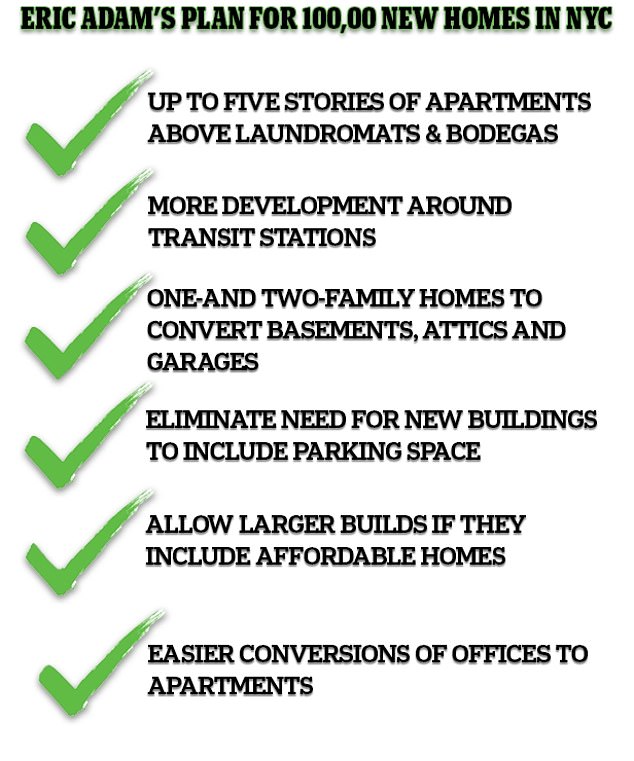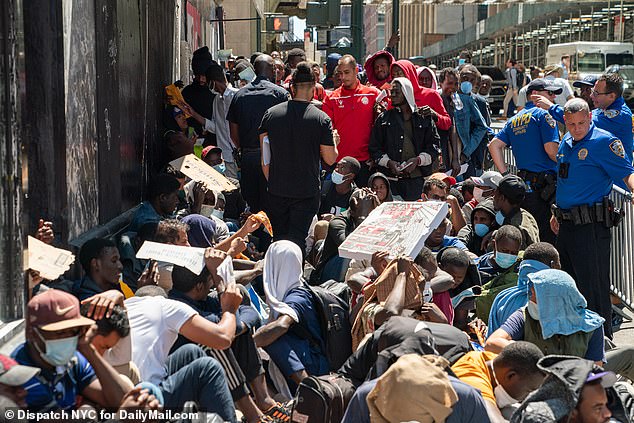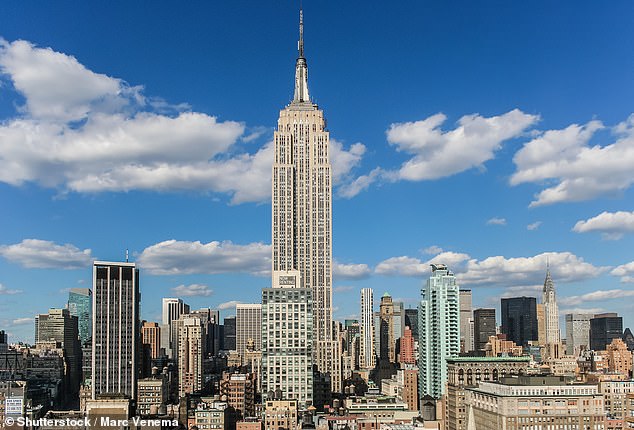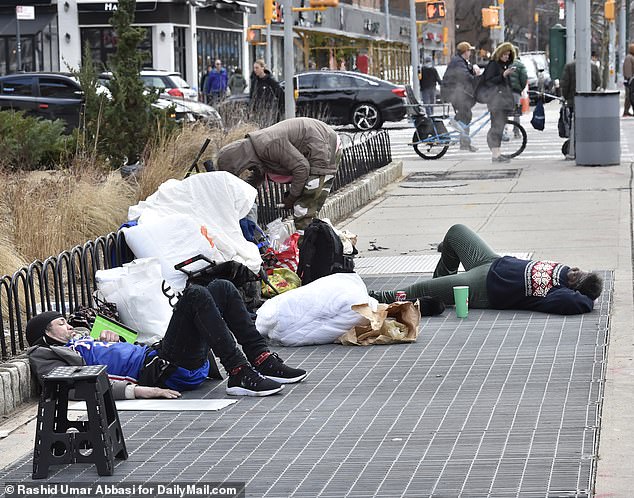NYC Mayor Eric Adams makes sweeping changes to city residential zoning laws to build 100,000 NEW homes above commercial strips and near subway stations
New York Mayor Eric Adams makes sweeping changes to the city’s residential zoning laws to build 100,000 NEW homes above commercial strips and near subway stations
- Adams proposed changes to address New York City’s housing crisis
- Reforms would make it easier for developers to build new homes
- The Big Apple is plagued by homelessness and an influx of migrants
New York Mayor Eric Adams shared a comprehensive plan to address the city’s housing crisis, paving the way for the construction of 100,000 new homes in the Big Apple.
Adams announced the largest housing renovation in decades at the Borough of Manhattan Community College on Thursday.
His “groundbreaking” plans could rip up restrictions on building around subway stations and above laundries, bodegas and single-storey residential units, allowing extensions of up to five storeys.
New construction could be much larger if it included affordable housing; one- and two-family homes could be given the green light to convert basements, attics and garages into apartments and the administrative burden surrounding the conversion of office buildings could be removed.
“There’s one thing that has changed little since 1961: New York City’s zoning laws,” Adams said. “So many of the problems we face are rooted in the ongoing housing crisis.”
The proposals will help a city in desperate need of affordable housing to meet an influx of migrants – of which the city has already taken in 110,000 – and a growing homeless population.
Eric Adams announced sweeping housing reforms after being criticized for his handling of the migrant crisis

Adams wants to rewrite current rules limiting housing growth in New York after U.S. Census data showed as many as 404,750 people left the city between 2020 and 2022.
If Adams gets his wish, the new proposals would allow construction on almost every corner of New York City.
“This isn’t tinkering around the edges, this is breaking new ground – literally – by rewriting the mistakes of history,” Adams said.
More than 110,000 asylum seekers have arrived in the city since spring 2022, and more than 10,000 are currently arriving every month.
A recent study found that homelessness in New York City is up 18 percent compared to last year, with a total of 4,042 people sleeping in the subway or on the streets.
“By rewriting the mistakes of history, this plan will allow us to build a little more housing in every neighborhood, boost affordable housing, build more housing near transit hubs, convert unused office space into apartments , renew our commercial corridors, help small homeowners build better spaces on their properties and, finally, prioritize people over parking,” the mayor said.
One proposal would allow the construction of apartment buildings up to five stories high on top of laundromats and bodegas in some neighborhoods outside Manhattan, where this is currently prohibited.
Adams also wants to make it easier for one- and two-family homes to convert spaces such as basements, attics and garages into apartments, freeing up unused space that already exists in the city.
He also plans to allow larger developments in the city if they provide affordable housing, and wants to eliminate the need for new buildings with parking – something that has held off many developers in the past.

More than 110,000 asylum seekers have arrived in the city since the spring of 2022

Adam’s plan would change zoning laws and allow the construction of more than 100,000 homes

New York City is facing a growing homeless population, partly due to a lack of affordable housing
If his plans go ahead, it would make it easier for developers to convert office spaces into apartments and smaller apartment sizes would become legal.
As radical as the plans are for the city, they could take years to come into effect and must be approved by the city council.
During his campaign, Adams made promises to address the housing crisis, but so far his previous housing projects have failed.
Restate company Douglas Elliman reported that the average rent in Manhattan was $5,552 in August.
The National Low Income Housing Coalition said there is a shortage of 655,940 affordable and available rental units in New York for extremely low-income renters.
